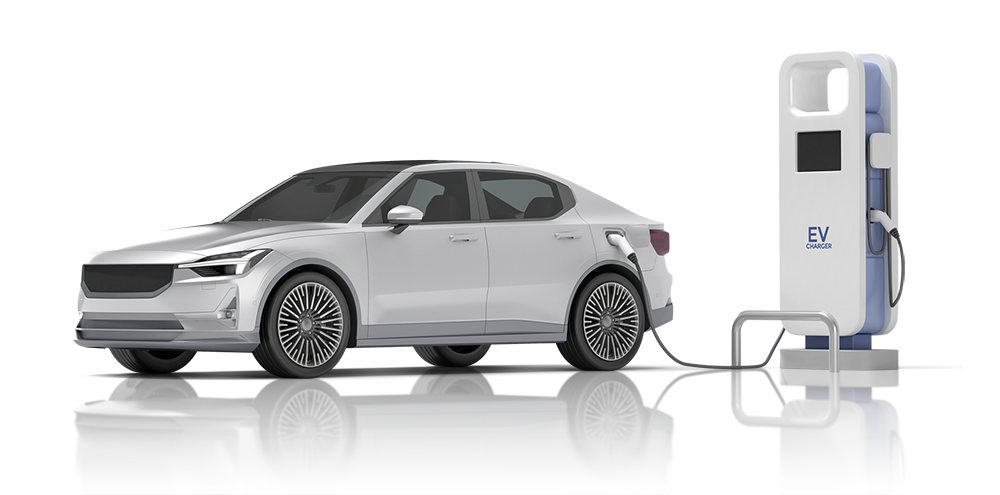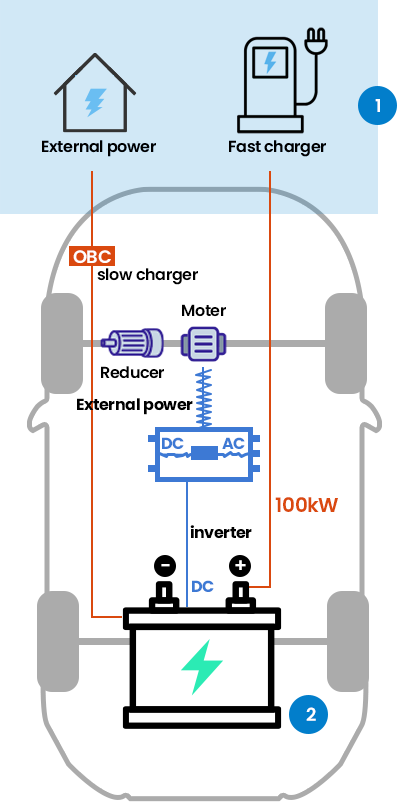Global leader in powertrain trusted by customers Hwashin Precision Co., Ltd.
It is an eco-friendly vehicle that moves using only electricity, and is a vehicle that generates driving power by supplying electric energy from a high voltage battery to an electric motor. It does not use fossil fuels, so there is little exhaust gas emission or noise. Electric cars were built earlier than gasoline cars in 1873, but they were not put into practical use due to problems such as the heavy weight of batteries and the time it takes to charge them. However, as environmental pollution and resource shortages have emerged seriously, development competition among automakers in each country has been fierce since the 1990s.

Electric vehicles are not only eco-friendly, such as not emitting carbon dioxide (CO2) or nitrogen oxides (NOx) because they do not use fossil fuels while driving, and are economical because driving only with electric motors is the lowest cost. In addition, the life of the vehicle is relatively long, and there is a low risk of explosion in case of an accident. In addition, it can be charged at home with late-night power, and it is easy to operate because there is no need to change gears.

Mass production Electric Vehicle No. 1 is a high-performance electric vehicle EV1 launched by GM in 1996 and marketed in California, the U.S., and was designed to run up to 300 kilometers per hour on a single charge. EV1 drew attention when famous Hollywood actors such as Tom Hanks and Mel Gibson made their first purchases, but GM suddenly stopped selling it, collected all of them, and disposed of them in the desert of Arizona, the U.S. Since then, electric vehicles such as the Ford Ranger, Toyota RAV4, and Honda EV Plus have been on the market, but they have exposed their limitations in practicality due to a large amount of time spent charging the battery and a short mileage. As a result, hybrid cars (HEVs) and fuel cell vehicles (FCVs), which are powered by electricity charged with an auxiliary charging engine, were developed and studied, and developed countries promoted large-scale investment and compulsory supply policies at the government level for early practical use of electric vehicles.
Since 2003, the U.S. state of California has mandated the sale of zero-emission vehicles (ZEVs), making it mandatory to sell more than a certain percentage of zero-emission vehicles such as electric vehicles, hybrid electric vehicles, and super-low-emission gasoline vehicles depending on the number of cars sold by each company. As a result, GM focused on developing electric vehicles to meet the mandatory sales bill for pollution-free vehicles, and in November 2012, it launched the second electric vehicle "Chevy Spark EV" since EV1. However, the sales rate is still low because electric vehicles are more expensive than gasoline vehicles and charging stations are limited.
Japan currently has the most accumulated technology in electric vehicles. Mitsubishi Motors launched the world's first electric vehicle "i-MiEV" for government offices and corporations in 2009 and has been selling it to the general public since April 2010. In addition, Nissan has begun full-fledged commercialization by launching a "Leaf" that is more competitive than the iMive. Since then, BMW, GM, and Volvo have unveiled small electric vehicles, and in Korea, Hyundai Motor produced the country's first electric vehicle "Blue On" in September 2010, and Hyundai Kia Motors unveiled Korea's first mass-produced high-speed electric vehicle "Ray EV" in late December 2011.